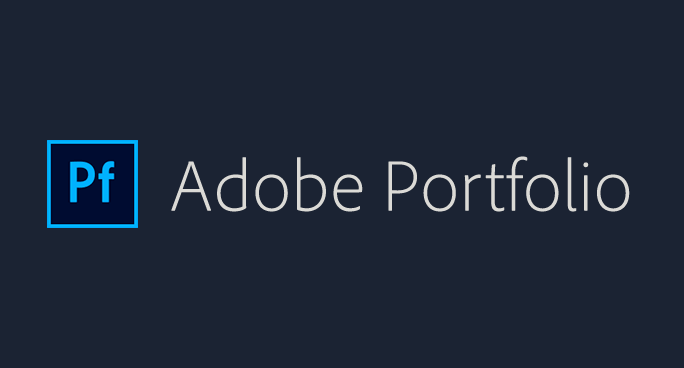Adobe Portfolio is a popular platform for creatives to showcase their work and build their online presence. Whether you’re a graphic designer, photographer, or artist, designing an effective Adobe Portfolio can help you stand out and attract potential clients. Here are some tips for designing an effective Adobe Portfolio.
Keep it Simple
Simplicity is key when designing an effective Adobe Portfolio. Choose a clean, minimalist layout that puts the focus on your work. Avoid cluttered designs and distracting elements that can detract from your portfolio’s overall impact.
Organize Your Work
Organizing your work is essential for an effective Adobe Portfolio. Group your work into categories, such as “Graphic Design,” “Photography,” and “Illustration,” to make it easy for viewers to navigate and find what they’re looking for.
Showcase Your Best Work
Your Adobe Portfolio should showcase your best work and highlight your unique style and skills. Choose your best pieces and display them prominently on your portfolio’s homepage. Don’t be afraid to remove work that no longer represents your current style or level of expertise.
Use High-Quality Images
High-quality images are essential for an effective Adobe Portfolio. Use high-resolution images that showcase your work in the best possible light. Make sure your images are properly sized and optimized for fast loading times.
Include Your Bio and Contact Information
Including your bio and contact information is essential for an effective Adobe Portfolio. Write a brief bio that highlights your skills and experience, and include your contact information, such as your email address and social media profiles, to make it easy for potential clients to get in touch with you.
Customize Your Portfolio
Customizing your Adobe Portfolio can help you stand out and showcase your unique style. Choose a colour scheme and font that reflects your brand and style. You can also customize your portfolio’s layout and add your own custom pages.
Keep Your Portfolio Up-to-Date
Keeping your Adobe Portfolio up-to-date is essential for maintaining an effective online presence. Regularly update your portfolio with new work and remove any outdated pieces. Keep your bio and contact information up-to-date, and respond promptly to any inquiries or requests from potential clients.
By following these tips, you can design an effective Adobe Portfolio that showcases your best work, highlights your unique style and skills, and attracts potential clients. Remember to regularly update your portfolio and make adjustments as necessary to ensure that it remains relevant and impactful.
Creating a Stunning Website Design: Tips from a Web Design Agency
Introduction:
A great website design is crucial for businesses to establish a strong online presence and attract potential customers. However, designing a website that is both aesthetically pleasing and functional can be challenging. That’s why we’ve reached out to a top web design agency to get their expert tips on creating stunning website designs.
- Focus on User Experience The user experience (UX) should be at the forefront of your website design. Ensure that the website is easy to navigate and that users can find the information they need quickly. Make sure that the website is responsive and loads quickly on all devices.
- Use High-Quality Visuals Visuals are a powerful tool in website design. They can be used to attract attention, convey messages, and evoke emotions. Using high-quality visuals, such as images, videos, and graphics, can make your website more engaging and memorable.
- Pay Attention to Typography Typography plays a significant role in website design. The right font can make the website more legible, attractive, and cohesive. Make sure to choose a font that matches your brand identity and is easy to read.
- Keep it Simple Simplicity is key in website design. A cluttered website can be overwhelming and confusing for users. Keep the design clean, minimalistic, and focused on the most important information.
- Ensure Consistency Consistency is crucial in website design. Ensure that all elements of the website, including fonts, colours, and layouts, are consistent throughout the site. This will make the website more professional and easier to navigate.
Creating a stunning website design requires attention to detail, creativity, and a focus on the user experience. By following these tips from a top web design agency, you can create a website that is both visually appealing and functional, and that helps you achieve your business goals.
The Art of Logo Design: Creating a Memorable and Timeless Brand Identity
The best logo design is a visual representation of a brand and is often the first point of contact between a company and its customers. It is a crucial element of a company’s brand identity and can make or break its success. A well-designed logo can convey a company’s values, personality, and vision in a simple and memorable way.
To create a great logo, designers need to consider a variety of factors, such as the company’s target audience, its unique selling proposition, and the current design trends. The logo should be simple, distinctive, and easily recognizable. It should work well in different sizes, on different backgrounds, and across different mediums.
A good logo should also be timeless, meaning it should be able to withstand the test of time and remain relevant even after many years. It should not be overly trendy or follow passing fads but rather reflect the essence of the brand in a timeless and classic way.
In summary, a well-designed logo is a powerful tool for creating a memorable and timeless brand identity. It should be simple, distinctive, and easily recognizable while reflecting the company’s values, personality, and vision. By following these principles, designers can create logos that stand the test of time and help their clients build successful brands.




